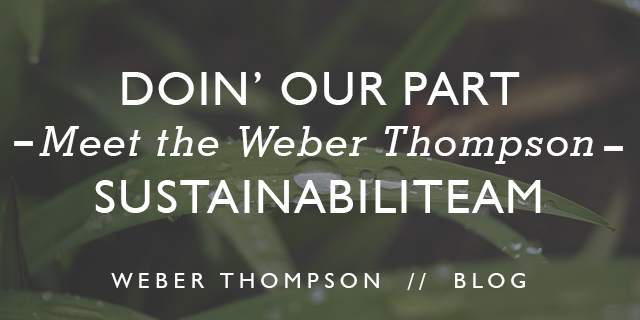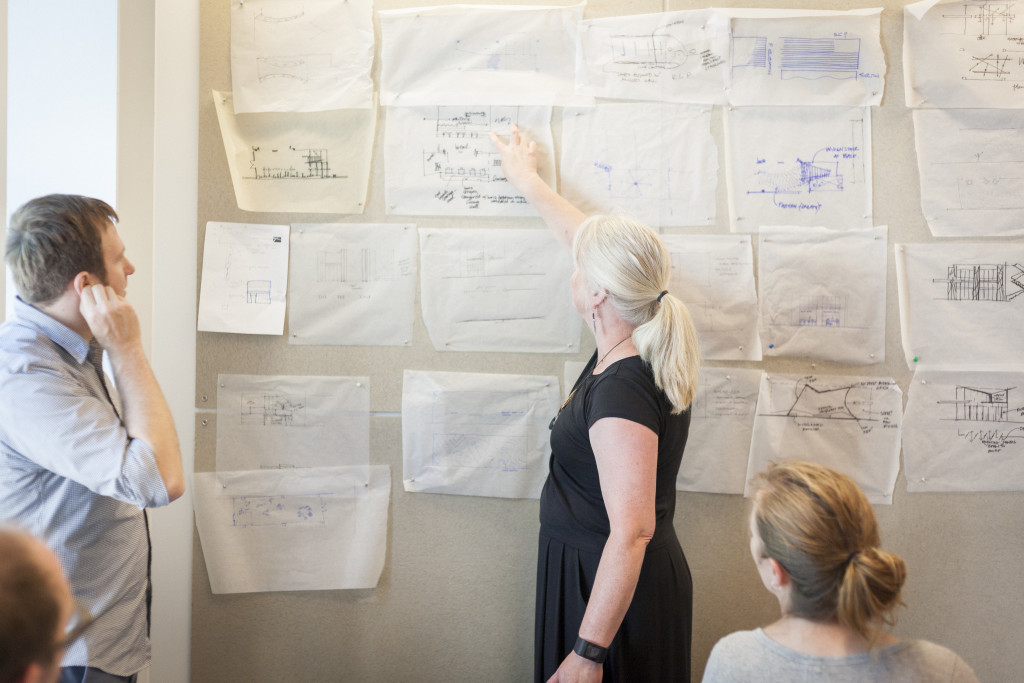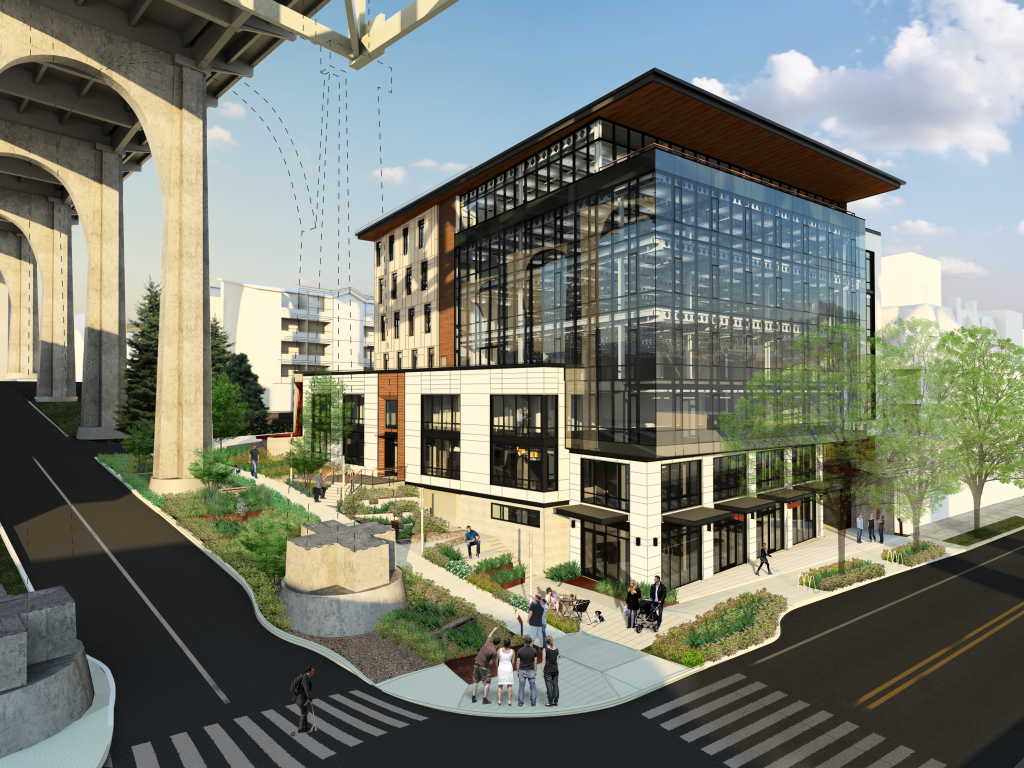By
In celebration of Earth Month, I want to take a minute to introduce the Weber Thompson SustainabiliTeam (WTST), our internal green team. Despite working in ‘Ecotopia’ (the Pacific Northwest), and despite our progress toward well-sited, energy-efficient, water-efficient, lower-toxicity and lower-resource buildings, now more than ever we need strategic thinking and additional effort to continually improve our project portfolio. The WTST sprung from the AIA 2030 Commitment, a voluntary initiative in which architecture firms track and annually report their projects (benchmarking progress against the 2030 Challenge), write a sustainability action plan, and commit to improving their own office operations. Weber Thompson signed on to the Commitment in 2010, and we’ve been tracking our portfolio and office operations since. We are about twenty people strong, with a core team of seven that sets goals and leads initiatives within the firm.
As laid out in our Sustainability Action Plan, we hope by the year 2020 to be an established leader in creating thoughtful, resource efficient, healthy, equitable and beautiful commercial and multifamily residential buildings at an urban scale. We’ll achieve this through refined visioning and goal-setting on individual projects, and by developing and maintaining internal education, learning and sharing lessons from our office operations, improving effective communication and advocacy, and conducting original research. Most importantly, we strive to hone the value proposition – how greener buildings make for better investments and provide long term value for owners.
I recently did a Q&A with The Registry where I talk about how Seattle is very progressive when it comes to green building, but there is room for improvement. There isn’t much motivation to do more than code minimum for building performance, and we can get wrapped up in jurisdictional height and area incentives for green building, without letting sustainable strategies demonstrate their own intrinsic value. What I didn’t talk about was the exceptional clients and projects that we are fortunate to work with – projects that have gone and will go above and beyond status quo, with owners who are willing to take measured risks to do something they believe in, and recognize value in the market for high-performance building.
In DATA 1, the owner, COU, LLC chose to pursue LEED Core & Shell Gold certification because they knew that their likely future tenants (tech office) would be attracted to a building certified to be healthier and more resource efficient. For Watershed, the same building owner is going beyond LEED to participate in the Seattle Living Building Pilot Program, with a focus on Materials for ILFI Petal Recognition, in addition to City of Seattle energy, water, and stormwater management targets. Both projects have either completed or are pursuing Salmon Safe certification. The cornerstone of that certification is intensive management and treatment of stormwater from the Aurora Bridge, a harmful source of runoff beyond the project boundary. Our client is doing this because they are passionate about the health of the local waterways and habitat. Both projects also go far beyond the code and certification requirements for bike parking and amenities, recognizing an unmet tenant need and the unique opportunity of proximity to the Burke Gilman trail that can contribute to car-free commuting.
Pike Passive in Capitol Hill, by Cascade Built and Barrientos RYAN, is pursuing Passive House certification, helping to scale up Passive House into multifamily projects, and creatively moving common areas to the exterior to further reduce overall building energy use while making a special place for residents.
Our noteworthy green projects include affordable housing, a unique building type as building managers and owners are more focused on operational expenses than market rate apartments, and therefore prioritize building performance and durability in the design phase. Also, state and federal funding sources are often tied to green building certifications. Bellwether’s Arbora Court in the University District is pursuing certification under the Evergreen Sustainable Design Standard, and used an innovative process driven by Walsh Construction. The AMP (Asset Management Preservation) initiative is a process that assessed added cost and value for LEED and Passive House-type strategies beyond code, which the team selected a la carte. At Raven Terrace in SHA’s Yesler Terrace redevelopment, the project was certified under both the Evergreen Sustainable Design Standard and Enterprise Green Communities.
This is just a sample of the high-performance projects we have the pleasure of designing and delivering. This month, while we think about our individual environmental impacts, we reflect on our current projects, strive for continuous improvement, and preview the bright future for us at Weber Thompson.


